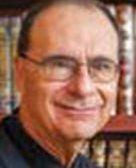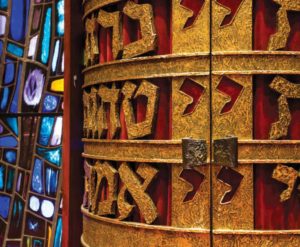Professor Wilson’s call for interreligious dialogue between Jews and evangelicals comes at an opportune moment—a welcome antidote to our age of polarized certainties and exacerbated distrust. Regrettably, the globalization of communication has not altogether opened channels of mutually rewarding intercultural dialogue. On the contrary! It has enhanced our capacity to select a version of the news that only others like ourselves listen to and to cherry pick among an infinity of websites that, again, only deepen our prejudices.
Simultaneously, terrorism and war have galvanized everyone to erect psychological fences of fear, a sure guarantee that people different from ourselves are more likely to be seen as threats to our security than as opportunities to broaden our horizons. Increasingly, we hunker down among people who are already in our own spiritual and intellectual comfort zone, as we take up residence in gated communities of the mind where anyone substantially different is demonized as dangerous.
This analysis is true even of liberals who think of themselves as open minded on all things. I teach in such a liberal seminary and consider myself religiously liberal. Yet in my world too, those all around me reinforce each other’s beliefs without substantially considering alternatives. Whether Reform Jews or evangelical Christians, we are most comfortable in our own certainties.
Not that certainties need be problematic. “Here I stand,” Martin Luther is at least said to have said. Pragmatist (and relativist) Richard Rorty denies that there are any essences to reality and thinks the purpose of inquiry must be utility not truth, but even he digs in his spade (as he puts it) in order to plunk for the “progressivist view” of a “liberal humanitarian” America—his own certainty of the way it ought to be.1 The point is, we all have our own certainties, and so we should. Wilson identifies his as the gospel’s good news. As a Jew, I have my own good news that makes its claim upon me.
Let me explain.
Rabbinic literature commands a blessing of God, who “is good and does good,” to be said upon “hearing good news”—for example, in our Grace After Meals, a liturgical event associated with God’s promise of everlasting life. I mention this as an example of where I take my stand, but also as an instance of Christian and Jewish common ground. We differ on whether the good news is realized through Torah or through Jesus of Nazareth. But equally, we ought to see the functional equivalence of Torah for Jews and Christ for Christians.
We share as well an affirmation of human sin and the need for repentance and pardon. To be sure, we differ significantly on many matters. To be sure, as well, these differences underscore our own respective uniqueness, but only within a prior commonality that deserves emphasis.
It matters how we speak of that commonality. Not just any language will do. We need a hermeneutic that deepens the religious mystery, a descriptive strategy that moves us farther along in our respective spiritual journeys and equips us for the task of working in the world together. Those who came before us in this experiment in dialogue have bequeathed us the most important lesson: to avoid judgmental characterization of each other as errant. But we need now a further step. Earlier generations replaced the charge of errancy with the facts of history, simple historical recollections of how Jews and Christians developed differently. I am suggesting something further: the language not just of historical analysis but of theological consequence.
My example of praising God for good news in the Grace After Meals can prove telling. Were we to limit ourselves to history, we would enjoy discovering that in our own distinctive ways, we have gone about the business of promising some version of eternal life. We might then profitably explore each other’s literature and promise as these have developed through the ages. All that would be well and good. But what, we may ask, is the significance of this parallelism? Are we simply accidents of history, two communities who arose side by side and who then, by chance, moved through history together? I suggest we go farther and find a model of being joined so firmly at the hip from our common origin in late antiquity to now.
What if we describe ourselves as a theological double helix, as if our corner of human history has been a working out of some double-stranded spiritual DNA? Western history, anyway, would be not just the unfolding of historical events on the ground but the unfolding as well of God’s will, in which we Jews and Christians have been slated to circle each other perpetually and in close proximity—neither separating completely nor becoming one another, but circling, ever circling, so that we might someday act together for the greater cause that we call God?
Here is a metaphor that not only accounts for the history it describes but also leads us further and higher in our own distinctive callings. To be sure, much of our historical path has not been trod as equals. But the age of Christian hegemony has ended, and here we both remain, together facing a world in which the “sacred canopy” that once enveloped all we do2 has been replaced by a secular one. But the sacred world of the past had plenty of room for secular pursuits, and the secular canopy of today invites plenty of opportunity for religion—an opportunity to work together in a world that needs us both.
When Wilson says the purpose of dialogue is to listen, I fully agree. When he says also that we need not worry about losing our own distinctiveness, I agree as well. I am suggesting here, however, that out of our mutual listening there should emerge some common understanding that expands our consciousness of being locked in common commitment to a fateful and faithful partnership with which we have been graced.
Wilson properly understands the main impediment to fruitful dialogue as far as Jews are concerned: the fear that their Christian partners harbor proselytizing purposes. But, similarly, he understands that Jews have often treated Christians with intellectual contempt, as if evangelicals especially have nothing to say that matters. Hence the importance of this moment, when both of us become Abraham, hearing God’s invitation to “a land that God will show us.” We may not yet know the path to get there, but the world has changed enough for us to suspect that we are unlikely to get there alone. If we always think the way we always thought, we will always get what we always got; and it is time to “get” something new.
Wilson’s introductory invitation and my own response above suggest some guidelines to govern our journey.
1. To begin, we will have to reconsider our origins so that Christians are no longer seen as breaking off from Judaism in some manner. That view, historically incorrect, has served nefarious purposes for both of us. Jews could see Christians as having lost their way while Christians could see Jews as stubbornly adhering to a dead-end past. In truth, we are parallel products of late antiquity, two of many first- and second-century attempts to interpret the Hebrew Bible differently. Christians saw it leading to a second and definitive act of grace in Jesus Christ; Jews invented an entire corpus of rabbinic interpretation whereby Torah became the means to salvation. Dialogue encourages us to work out the consequences of our own respective positions for each other to hear.
2. But as I say, this mutuality of hearing is only part of the task. We need also a higher-order conversation that allows us to see ourselves and each other in greater fullness and appreciation. I have offered the analogy of a sacred double helix. Other helpful metaphoric aids will follow. We will develop an entire body of rhetoric that is neither Jewish nor Christian, but something commonly devised to which we can both assent—something like John Rawls’s “public use of reason,” argued by Jürgen Habermas as the means by which different religions translate their internal logic into terms amenable to discourse and debate by others than themselves.3
3. A hermeneutic of commonality need not deny the essential differences across the DNA chain. But we will have to share a balancing presumption—again, from Habermas: a common appreciation for “the morality of human rights [as being] compatible with our own articles of faith.”4 Without at least some agreement to agree on basic human rights, it becomes difficult to see how religion can occupy what Richard John Neuhaus famously called “The Naked Public Square.”5
4. We go about this task as believers and as scholars. We share a scholar’s faith in textual analysis, historical truth, the scientific method, and the sense that academia need not be detrimental to our spiritual health. But similarly, we both believe in prayer, in the very concept of sacred Scripture, in the interpretive capacity of sacred reading, and then, in returning to the world to draw human attention to a higher destiny.
ENDNOTES
1Richard Rorty, Philosophy and Social Hope (London and New York: Penguin, 1999), 54, 14–15, 17.
2Peter Berger, The Sacred Canopy (New York: Doubleday, 1967).
3Jürgen Habermas, “The Political,” in The Power of Religion in the Public Square, ed. Eduardo Mendieta and Jonathan Vanantwerpen (New York: Columbia University Press, 2011), 25, 26.
4Ibid., 27.
5Richard John Neuhaus, The Naked Public Square (Grand Rapids: Eerdmans, 1984).


